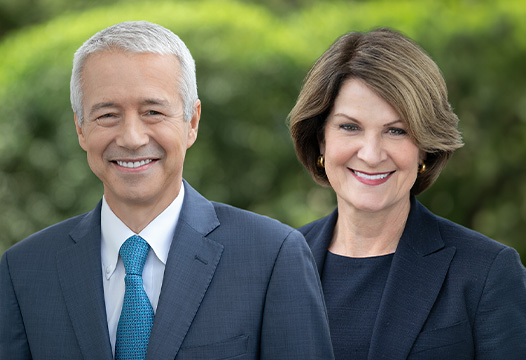Despite being preventable and curable, tuberculosis (TB) is the world’s deadliest infectious disease. Growing resistance is compounding the challenge, resulting in nearly half a million new cases of multidrug-resistant TB (MDR-TB) each year, with more than 95% of TB-related deaths occurring in LMICs.5 J&J spent 10 years developing the first new MDR-TB treatment in more than 40 years and the last 10 years advancing access to this treatment.
In 2012, after years of focused investment in R&D, we introduced SIRTURO (bedaquiline), the first targeted TB medicine with a novel mechanism of action. We have continued to invest in efforts aimed at safely and sustainably bringing more people into treatment while collaborating to help discover the next generation of medicines needed to end TB.
Today, three of every four MDR-TB patients on treatment are receiving a bedaquiline-containing regimen. Since 2014, approximately 800,000 courses of SIRTURO, our MDR-TB treatment, have been delivered to patients in 159 countries, including all 30 high-burden TB countries. Based on WHO data showing that 10 people are infected per one non-treated patient, J&J has helped avert potentially more than 7 million cases of TB.6
With regard to access, in 2023:
- We acted to support all eligible countries to procure bedaquiline through the Stop TB Partnership’s Global Drug Facility, an organization that provides access to quality TB medicines and supports their appropriate use to help ensure they remain effective in the face of rising global drug resistance.
- We announced that we would not enforce patents we own and control for SIRTURO (bedaquiline) to treat MDR-TB in 134 LMICs. The decision is intended to assure current and future generic manufacturers that they may manufacture and sell high quality generic versions of SIRTURO without a concern that the Company will enforce its bedaquiline patents, provided the generic versions of SIRTURO produced or supplied by generic manufacturers are of good quality, medically acceptable and are used only in the 134 LMICs.
Underdiagnosis remains a significant barrier to treatment and nearly two-thirds of the 410,000 people who develop MDR-TB each year are not diagnosed or enrolled in treatment.7 We are working with partners to solve the issue of underdiagnosis. Our research to understand the care journey for people affected by TB facilitates the design of solutions to improve care-seeking behavior, destigmatize the disease and build community advocacy. Alongside those organizations, we have reached 120 million people at risk of living with undiagnosed TB in care-seeking behavior change campaigns, enabling 600,000 at-risk individuals to be screened, leading to more people being referred to care, diagnosed and started on treatment. Examples of our collaborative efforts include:
- ending workplace TB: Leveraging the potential of private businesses through a catalytic initiative in high-burden countries to reach employees, their families and communities through awareness, detection and treatment programs in the workplace;
- empowering youth: Engaging youth through digital-first initiatives, such as the edutainment campaign MTV Nishedh and the social media campaign, “Be the Change” in India and the educational gaming campaign “TB Warriors” in Southeast Asia, to enable early detection;
- reaching more children: Supporting integrated care initiatives to identify, test and treat children, who are among the most under-resourced population, by improving care and accelerating detection in collaboration with organizations like PATH in Vietnam. Similarly, the Johnson & Johnson Foundation, has supported Aquity Innovations in South Africa.
5 WHO, https://www.who.int/teams/global-tuberculosis-programme/tb-reports/global-tuberculosis-report-2023, accessed March 2024.
6 Based on 10 people infected per 1 non-treated DR-TB patient, WHO data, https://www.who.int/westernpacific/health-topics/tuberculosis and cure rate of 87.8% for patients treated with bedaquiline containing regimens, based on The Lancet Respiratory Medicine, Volume 392, September 2018, Pages 821-34.
7 WHO, “Global Tuberculosis Report 2023,” https://www.who.int/teams/global-tuberculosis-programme/tb-reports/global-tuberculosis-report-2023, accessed March 2024.




